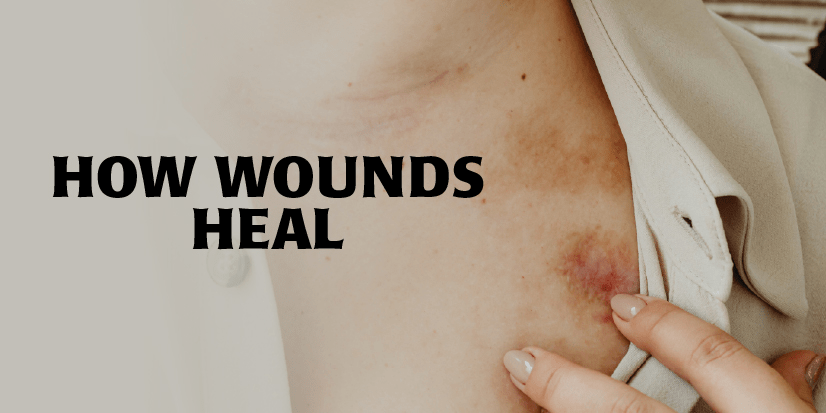How Wounds Heal—and What Happens When the Body Needs Help
- Category: Health Education
- Posted On:
- Written By: Dr. Donald Higgins

Our bodies are natural healers. From a skinned knee to a paper cut, your body knows how to respond, repair, and regenerate. But what if that healing process gets stuck—or doesn’t happen at all? That’s when a specialized wound care team can step in and make all the difference.
At Lake Charles Memorial’s Wound Care Center, we help patients whose wounds aren’t healing the way they should. But first, let’s take a closer look at the amazing process your body goes through every time it tries to heal a wound.
The Science of Wound Healing: A Step-by-Step Process
Healing a wound isn’t just a matter of slapping on a bandage and waiting. Your body goes through four distinct but overlapping stages—and each one has a very important job to do.
1. Hemostasis: Stopping the Bleeding (Immediately after injury)
The second your skin is broken, your body jumps into action. Blood vessels constrict to reduce blood loss. Platelets (a type of blood cell) rush to the scene and begin clumping together to form a clot, creating a temporary barrier to prevent more bleeding. That clot also forms a scab, which protects the wound and creates a safe space for healing underneath.
Think of this process as placing a tarp on a leaky roof – your body is securing the area before the real work of healing can begin.
2. Inflammation: Cleaning Up the Damage (Hours to days after injury)
Next, the body brings in its immune system to clean house. White blood cells flood the area to fight off bacteria and remove any damaged or dead cells. This stage is why wounds often look red, swollen, and feel warm—your immune system is doing its job!
You may even feel pain at this stage. Consider this pain as your body’s way of saying, “Construction in process. Be careful and use caution around this area.”
3. Proliferation: Building New Tissue (Days to weeks after injury)
Now that the wound is clean, it’s time to rebuild. This is when new blood vessels grow (a process called angiogenesis) to restore circulation, and special cells called fibroblasts begin creating collagen, the protein that gives your skin structure and strength.
New skin cells start forming over the wound, and the tissue underneath fills in. If you’ve ever seen a wound go from an open sore to pink, tender skin—that’s proliferation in action.
4. Maturation (Remodeling): Strengthening the New Skin (Weeks to months after injury)
Even after the wound looks like it’s healed, your body continues to remodel and strengthen the area. Collagen fibers realign and mature. This is when scars form, and over time, the skin becomes more durable.
It can take several months for a wound to fully regain strength—even if it looks healed on the outside.
When the Healing Process Fails
Sometimes, one or more of these healing stages get disrupted. Maybe there’s not enough blood flow to bring in oxygen and nutrients. Maybe the immune system is overwhelmed by infection. Maybe the wound is too deep or is swelling, or underlying conditions like diabetes are slowing things down.
This is when a wound becomes chronic—meaning it won’t heal on its own, or it heals very slowly.
Common causes of poor wound healing include:
- Diabetes (especially diabetic foot ulcers)
- Poor circulation (arterial or venous insufficiency)
- Pressure injuries (from being immobile or bed-bound)
- Infection
- Smoking
- Poor nutrition
- Certain medications or immune conditions
At the Memorial Wound Care Center, we specialize in treating wounds that refuse to heal. Our trained experts understand exactly how wounds heal—and why sometimes they don’t.
Here’s how we help:
Advanced Diagnostics
We determine what’s holding your healing back—whether it’s circulation problems, diabetes, or something else.
State-of-the-Art Therapies
We use cutting-edge treatments like:
- Hyperbaric oxygen therapy (HBOT) to boost oxygen delivery to damaged tissue
- Specialized wound dressings that speed up healing and prevent infection
- Debridement to gently remove dead tissue
- Graft placement to surgically place healthy skin to the wound site to promote healing
- Offloading techniques like total contact casting to relieve pressure.
Infection Control
We monitor for and treat infections early—before they have a chance to spread or cause further damage.
Nutrition and Lifestyle Support
Healing requires the right fuel. We provide education and guidance on protein, hydration, and vitamins to support your body’s efforts.
Trust the Healing Experts
If you or a loved one has a wound that hasn’t improved in two weeks, or is still open after six, it’s time to get help.
At Lake Charles Memorial’s Wound Care Center, our team is ready to get your body back on track—so you can move forward with healing, strength, and confidence.
👉 Learn more or request an appointment today:
Resources:
National Library of Medicine – Wound Healing Phases




